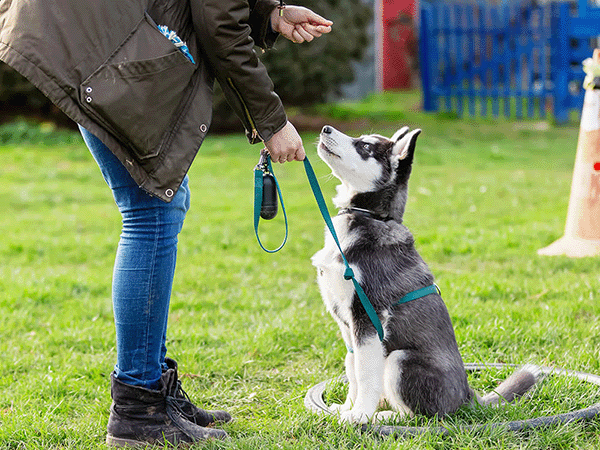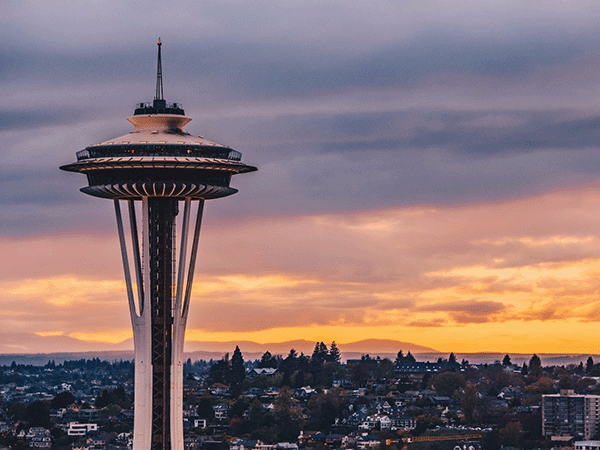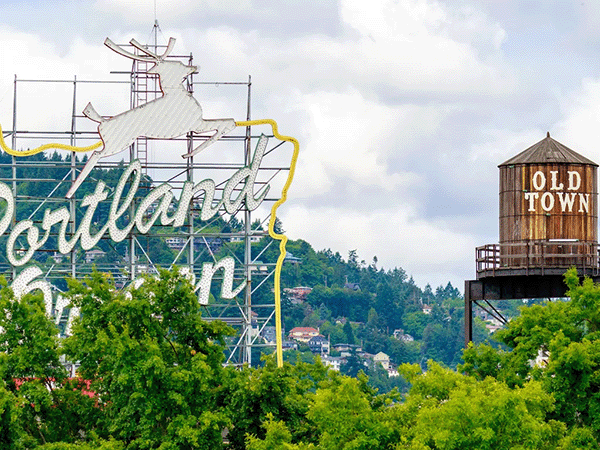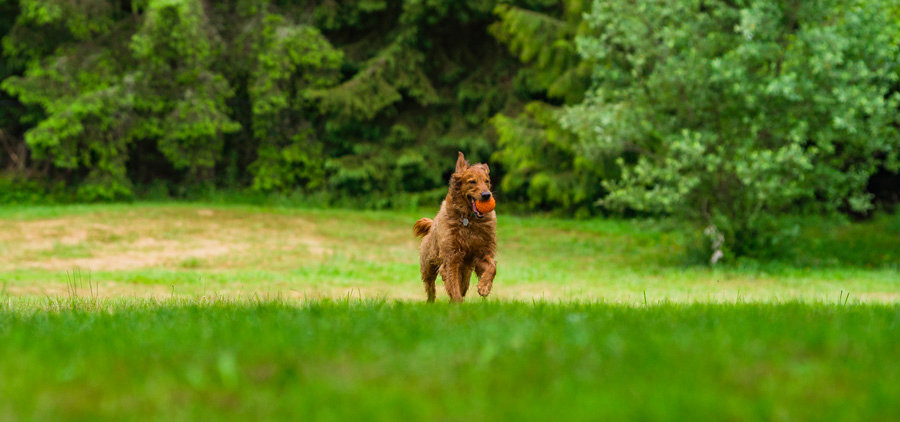How to Train Your Rescue Dog: A Complete Guide

* All Sniffspot articles are reviewed by certified trainers for quality, please see bottom of article for details *
Bringing a rescue dog home is incredibly rewarding. You're giving a dog a second chance, but it's a big change for both of you. Understandably, shelters can be stressful, so creating a calm environment is key. This guide covers everything about how to train a rescue dog, from prepping your home to mastering basic commands. We'll even talk about when to start training a rescue dog and when to call in the pros. Let's help your new companion thrive!
All dogs deserve an adjustment period: time to relax and decompress when they undergo a huge environmental change. And becoming part of a new household is quite the change! Dogs who have lived in shelters deserve extra consideration as they adjust to home life after living in a very stimulating (and sometimes frightening) environment. The sights, sounds, smells, routines, and general chaos of a shelter can take a toll on a rescue dog, especially if they were housed there for a lengthy period (or during a critical time in their own development, like part of young puppyhood).
Plus sometimes much of a shelter dog’s past life is unknown, including a history of abuse or history of neglect. While these things aren’t the most common previous experiences—most furry friends in the rescue world are surrendered due to circumstances like their guardians moving or having financial struggles, rather than outright abandonment or harm—they are possibilities to keep in mind as you try to set up a calm environment for your new dog.
What that means for you: Anyone adopting a shelter dog, especially first-time dog owners, should be prepared to ask lots of questions. If you need help before you bring a new dog home from the shelter, talk to a credentialed professional trainer who utilizes modern, humane training methods to prepare you for basic obedience training—and work you through any behavior obstacles you may face when your dog comes home.
When introduced to their home with care and compassion, shelter dogs can make some of the best family members! And saving a life is one of the most rewarding experiences.
Prep Your Home for Your Rescue Dog
Talk to the shelter staff about the dog you’d like to bring home to see if they are a good fit for the lifestyle you (and your family) live. Some important questions to consider:
- Has the dog you’re interested in shown any signs of fear or aggression?
- How is your potential new family member with bathing and grooming activities?
- How do they feel about putting on gear (collar, harness, etc.)?
- What about their reaction to body handling?
- How do they feel about getting in/out and riding in a car?
- What kind of activities do they enjoy?
- How energetic are they?
- Do they have protect/guard resources (food, toys, spaces, etc.)?
- Do they have any injuries or health conditions?
- Are they house trained? What about crate trained?
- Has the dog met children and how did they react?
- How does the dog do with other dogs and other animals?
- Does the shelter anticipate any specific training issues? (If so, this doesn’t have to be an automatic dealbreaker! Behavioral cases—like particularly fearful rescue dogs or those who display unwanted behaviors in a shelter environment—can often become excellent companions. Adopters just need to be prepared for more work, and ready to work with a positive reinforcement trainer from the get go.)
Some shelter dogs are brought into a foster program. If this is the case, the foster should be able to answer most of these questions. This information is useful for you to transition a dog into your home and as you begin working with a professional trainer.
Key Takeaways
- Prioritize patience and create a calming environment: Give your rescue dog ample time to adjust to their new home, minimizing stress and offering a predictable routine. Focus on building a positive relationship through gentle interactions and rewards.
- Socialize safely and train effectively: Use secure spaces like Sniffspot to gradually introduce your dog to new experiences and build confidence. Work with a qualified trainer to teach essential cues and address any behavioral concerns.
- Recognize when professional guidance is needed: Don't hesitate to seek help from a certified trainer, behavior consultant, or veterinary behaviorist if your dog struggles with fear, anxiety, or aggression. Early intervention can make a significant difference.
Why Socialization Matters for Rescue Dogs
Socialization in dogs refers to being exposed to new stimuli and ideally making positive associations—or at least feeling neutral about a variety of places, people, other animals, and things.
Many shelter dogs lack socialization through no fault of their own. The window for initial puppy socialization closes between 16 and 20 weeks of age—these periods of time are when having positive experiences with as many sights, sounds, smells, and sensations is the most important. Adopting an adult dog means the window for critical socialization has closed for them. While providing positive experiences that help build an older puppy or adult dog’s confidence is possible, this is no longer considered socialization. Unless the information has been provided when the dog is surrendered, you are unlikely to have information on life with their previous owner, or how a shelter dog was socialized as a puppy.
Not all dogs have been socialized to children. This is a very important consideration before you decide to adopt a shelter dog–the last thing you want is to put a child at risk. Talk to the staff about the best way to introduce children to a new dog, or contact a trainer to help guide you through the slow introduction process to ensure everyone, furry and human, is safe.
Fearfulness, anxiety, and related behavior issues require counterconditioning and desensitization (and possibly medication) before the dog is able to learn. In other words, training by itself does not fix behavior issues. An experienced trainer, behavior consultant, and/or Veterinary Behaviorist may be necessary. It’s worth noting here that not all behavior issues are caused by trauma. Genetics, lack of proper socialization, health issues, and learning history are all factors. A puppy is not a blank slate, and these same factors apply to their development. Dogs experience stress, and those experiences affect their ability to learn.
Finding Socialization Opportunities on Sniffspot
While we typically associate “socialization” with puppies, understanding its meaning and importance is crucial for all dog owners, especially those with rescue dogs. Socialization involves exposing your dog to new stimuli and helping them form positive associations—or at least neutral feelings—with various places, people, other animals, and things.
Many rescue dogs haven’t had sufficient early socialization, which is most critical between 16 and 20 weeks of age. This can lead to fear, anxiety, or other behavior issues in new environments. If you’ve adopted an adult dog, remember that their critical socialization window has closed. You can still create positive experiences to build their confidence, but this differs from early puppy socialization. If your dog shows signs of fear or anxiety, consult a qualified trainer or veterinary behaviorist.
Sniffspot can be a valuable tool for creating these positive experiences. With thousands of private dog parks, you can find a safe, controlled environment to help your dog adjust. Look for spots with features that meet your dog's needs, such as water parks for dogs who love to swim, or quiet, secluded areas for more timid dogs. Sniffspot also offers resources on dog names, enrichment activities, and top dog trainers to support your dog's overall well-being.
Easing Your Rescue Dog into Their New Life
You may read about the 3-3-3 rule (sometimes stylized as the 3/3/3 rule) for shelter dogs. It goes like this:
- Three days to rest and decompress
- Three weeks to settle in and establish a routine
- Three months to become fully integrated into your home
This is a general guideline, and some dogs may take longer to feel comfortable. Remember that shelter environments can be stressful for dogs. They may simply need space and time to rest during their first few days home!
Give Your Rescue Pup Space to Decompress
Provide comfortable, separate-but-accessible spaces for your new dog to enjoy quiet time away from other pets using gates, pens, crates, or separate rooms. Introductions to other pets should happen slowly over a period of weeks. You might make use of crate time, larger x-pens, or dog-proofed separate rooms during your new family member’s initial adjustment.
Decompression refers to spending time away from frightening or triggering stimuli and focusing on rest and relaxation. The main focus of decompression is reducing baseline stress. Make sure your new dog’s needs are being met as far as nutrition and rest, or any medical care they may require. The first few weeks after your shelter dog comes home should be very low key. Avoid busy places (dog parks, cafe patios, friends’ houses, gatherings). It is best to limit human interactions to immediate family if possible.
Go at your dog’s pace, especially if your shelter dog is fearful. Step into your dog’s shoes. Everything in your shelter dog’s world is new when they come home with you. Try to imagine how overwhelming it might be for them. Be patient and adjust your expectations so you can help your dog in each new situation they encounter. Provide lots of positive rewards along the way!
Enrichment Activities for Your New Dog
Provide regular enrichment such as food puzzle toys or unhurried time in safe nature environments as part of your dog’s daily routine. (This may include outdoor time in a private space like a Sniffspot.)
Start a Routine with Your Rescue Dog
It doesn’t have to be perfectly timed or rigid—but providing your newly adopted dog with a predictable daily routine may help them settle in faster. If activities and social interactions are consistent and predictable, they may have an easier time.
- Schedules are especially important for house training. Take your new family pet outside at regular intervals: after meal times, after indoor exercise, and after naps are a great place to start.
- Schedules can also help with crate training, if that’s something you want to pursue with your rescue dog. (When used properly, crates can serve as important safe spaces to help shelter pups handle family life!) You can teach your new addition that there is a different between exciting time (for play and social interaction) and rest time (settling in a calm space).
Understanding Your Rescue Dog's Personality
While your dog is adjusting to your home, start reinforcing behaviors that you appreciate. This is not the time to think about “obedience” in a traditional basic-cue (like sit, down, come, etc) sense. Rather, it’s the time to keep reasonable expectations—and set the foundation you can build on later!
Begin Training Your Rescue Dog at Home
The easiest way to begin rewards-based training methods with your dog is to keep small containers of treats around the house. When you spot them doing something great, say “yes,” toss them a treat. By providing a treat, you are increasing the likelihood that the behavior will be repeated. This is how positive reinforcement works.
Kathy Sdao’s See Mark And Reward Training (SMART) is the best example of this simple type of training. Eye contact, responding to their name, resting in one of the comfy spots you’ve made for them (a crate or a bed), are all great behaviors to reinforce.
Once they’ve had some time to get used to your household, figure out what your dog likes to do. What kind of toys do they like? What’s their play style? What is interesting to them if you’re going on a walk? Provide your dog with activities they enjoy and observe their behavior afterward. What activities help them settle and rest? When do they seem most engaged with you? Keep track of what kind of treats they like the best for when you begin training in earnest.
The 3-3-3 Rule: Managing Expectations
You may read about the 3-3-3 rule (sometimes stylized as the 3/3/3 rule) for shelter dogs. It’s a helpful guideline for understanding the transition period:
- Three days to rest and decompress
- Three weeks to settle in and establish a routine
- Three months to become fully integrated into your home
This is a general guideline, and some dogs may take longer to feel comfortable. Shelter environments can be stressful for dogs, so they may simply need space and time to rest during their first few days home. Go at your dog’s pace, especially if they seem fearful. Everything in their world is brand new. Try to imagine how overwhelming it might be! Be patient and adjust your expectations so you can help your dog in each new situation. Positive rewards can help ease the transition.
Is a Training Class Right for Your Rescue?
If your dog is not fearful of other dogs or people, a group training class, such as puppy or introductory new dog class, is a great way to learn the basics. A good rewards-based/positive reinforcement trainer will help you understand how your dog learns and how best to teach them some skills that are useful for a life in a human household and world. This may include learning to use a clicker.
Group classes are as much (if not more) for the human end of the leash as they are for the canine end. You may be assigned homework. Group classes are generally structured so each session builds on the next, so remember to do your homework. Although the class may be called “obedience,” the purpose of group classes with a humane, positive reinforcement based trainer is to strengthen the bond between human and dog. You’re in it together! You’ll learn cues (basic commands) like sit, down, stay, begin the journey of walking together with a leash, and other basic obedience-related behaviors. If a formal obedience class is your thing, there are many that use rewards-based training methods.
Once you learn the basics, your dog may enjoy a tricks class or other more advanced training program. Most training facilities offer a variety of classes, so if you find a trainer or facility you like, see what else your dog might enjoy. Any dog can learn new skills or cool tricks as long as they are having a good time!
Group Classes vs. Private Training
If your dog isn’t comfortable around other dogs or people, group classes may not be the best fit. For dogs who are fearful or reactive, private training is often a better starting point. A good trainer can assess your dog's individual needs and create a customized training plan in a safe, controlled environment. This allows you to address specific behavioral challenges, like fear aggression, before introducing the complexities of a group setting.
Many trainers offer a combination of private and group lessons, so you can transition to group classes once your dog has developed some basic skills and confidence. Private training also allows for more personalized attention and feedback. You'll have the trainer's undivided focus, which can be especially helpful if you're a first-time dog owner or are facing a particularly challenging behavior issue. Plus, private lessons can be scheduled at your convenience and often take place in your home, reducing stress for your dog. Think of private training as building a solid foundation—it equips you and your dog with the tools you need to succeed, whether you continue with private lessons, join a group class later, or both.
Choosing the Right Trainer for Your Rescue Dog
If one-on-one training works better for your dog or your schedule, seek out a credentialed trainer who utilizes modern, science-backed, humane training methods. Whether they train in a facility or in your home, private training sessions are also great for learning basic skills. Private lessons also allow you to focus on specific skills or do some troubleshooting that you couldn’t do in a group class. Your trainer will develop an individualized training plan for you. If your dog displays challenging behaviors, private lessons are best.
Training Your Rescue Dog: Short and Sweet
Whether you’re working in a group class or privately with a trainer, keep your at-home training sessions short and positive. Short, frequent training sessions help to prevent your dog from getting frustrated or failing at an activity. If this happens, make the exercise easier by breaking it down into smaller steps, or going back to something you know they are already good at. Short, frequent sessions are the best way to work on any homework you are assigned by your trainer(s) from class or private sessions.
Use small, soft, smelly treats that are appealing to your dog and easy to chew. You’ll go through a lot of them during your training sessions. Dry treats require more chewing and often don’t work well for class, but this is where finding out what treats your dog prefers comes in handy.
Mastering Basic Commands: Sit, Stay, Come, Down
Teaching a dog basic cues—like sit, down, stay, and come—builds a foundation for a great relationship. These cues help your dog understand what you want them to do in various situations. Start with one cue at a time. Keep your training sessions short, upbeat, and positive. Use high-value treats your dog loves, and end each session on a successful note. Even if you’ve had dogs before, working with a professional trainer can help you learn how to best teach these cues to your dog. Every dog is an individual, and a good trainer can help you understand your dog’s learning style. For more tips on training your new rescue, check out this article on training a shelter dog. If your dog is struggling with any of these basic commands, consider scheduling time with a certified professional trainer.
Teaching "Leave It" and "Place"
“Leave it” is an incredibly valuable cue that can help keep your dog safe. This cue teaches your dog to ignore something tempting, whether it's a dropped pill, a piece of food on the ground, or another animal. Learning this cue can prevent your dog from ingesting something harmful. “Place” is another helpful cue that directs your dog to a designated spot, like a bed or mat. This can be useful for creating calm in the house, especially when you have visitors or during mealtimes. It gives your dog a clear direction and a safe space to relax. Like any new cue, start slowly and reward your dog generously for even small successes.
Leash Training Tips and Techniques
Walking nicely on a leash is a skill that takes time and patience for both you and your dog. Start with short walks in a familiar, low-distraction environment. Use a comfortable harness or collar and a leash that's the appropriate length for your dog. Reward your dog for walking calmly by your side, and allow sniffing breaks as appropriate. Avoid pulling or jerking the leash, as this can create negative associations with walks. If you encounter distractions, redirect your dog's attention with a treat or a cheerful voice. Remember, loose-leash walking is a process, so be patient and celebrate small victories along the way. If you're looking for a safe and enriching environment to practice leash training, consider booking a private Sniffspot.
House-training Your Rescue Dog
House-training a rescue dog requires patience and consistency. Accidents are bound to happen, so don't get discouraged. Establish a regular potty break schedule, taking your dog outside every 2-3 hours, after waking up, after meals, and after playtime. Reward your dog with treats and praise when they eliminate outside. If your dog has an accident inside, clean the area thoroughly to eliminate odors and prevent repeat offenses. If you're struggling with house-training, consult a veterinarian to rule out any medical issues and consider working with a certified professional dog trainer for personalized guidance.
Crate Training Made Easy
Crate training can be a valuable tool for providing your rescue dog with a safe and secure space. Introduce the crate gradually, making it a positive experience by placing treats, toys, and comfy bedding inside. Feed your dog meals in the crate and encourage them to spend short periods inside with the door open. Never force your dog into the crate or use it as punishment. Playing crate games can help create positive associations. Gradually increase the time your dog spends in the crate, ensuring they have plenty of opportunities to potty and exercise outside. A crate can be a valuable tool for house-training, travel, and providing your dog with a sense of security.
When to Seek Professional Help
Shelter life is hard, and so much is not known about dogs who end up in them. Whether they were found as strays or surrendered, there is a lot of background information on a shelter dog that you simply cannot know. If you adopt a dog from a shelter and they struggle with behavioral issues related to fear or anxiety, or display aggressive behaviors, seek professional help from an experienced trainer. They may recommend a behavior consultant or Veterinary Behaviorist. A team, including a veterinarian, is necessary for behavior cases. It takes a village! Please note that credentialed trainers, behavior consultants, and Veterinary Behaviorists utilize science-based methods. The American College of Veterinary Behaviorists and American Veterinary Society of Animal Behavior recommend against the use of aversive equipment such as choke, prong, and shock collars.
Recognizing Signs of Fear and Aggression
Many shelter dogs lack socialization through no fault of their own. The critical window for puppy socialization closes between 16 and 20 weeks of age. These early months are crucial for positive experiences with various sights, sounds, smells, and sensations. If you adopt an adult dog, remember that this window has closed for them. While you can certainly build an older dog's confidence with positive experiences, it's not the same as early socialization. Unless their previous owner provided detailed information, you likely won't know how a shelter dog was socialized as a puppy. For more insights, check out resources on dog socialization.
Not all dogs have been socialized to children, and this is a crucial factor to consider before adopting. You never want to put a child at risk. Talk to the shelter staff about the best way to introduce children to a new dog, or consult a certified dog trainer for guidance. A slow, careful introduction process ensures everyone's safety.
It's important to understand that training alone doesn't fix behavioral issues rooted in fear, anxiety, or aggression. These issues often require counterconditioning, desensitization, and sometimes even medication, before a dog is ready to learn. A combination of approaches may be necessary, and an experienced trainer, behavior consultant, or Veterinary Behaviorist can provide valuable support. Remember, not all behavior issues stem from trauma. Genetics, insufficient socialization, health problems, and learned behaviors all play a role. Learn more about addressing behavioral issues in dogs.
Addressing Separation Anxiety
Provide your new dog with a comfortable, separate but accessible space where they can decompress and enjoy quiet time away from other pets. Gates, pens, crates, or separate rooms can all work well. Introductions to other pets should be gradual, taking place over several weeks. Crate time, x-pens, or dog-proofed rooms can be helpful during the initial adjustment period. Find tips on creating a safe space for your dog.
Decompression means time away from potentially frightening or triggering stimuli, allowing your dog to rest and relax. The primary goal is to reduce their baseline stress. Ensure their basic needs are met, including nutrition, rest, and any necessary medical care. Keep the first few weeks low-key, avoiding busy places like dog parks, cafes, or gatherings. If possible, limit human interaction to immediate family members. For a deeper dive into this topic, explore resources on decompression for dogs.
Most importantly, go at your dog's pace, especially if they're fearful. Put yourself in their paws and consider how overwhelming a new environment can be. Be patient, adjust your expectations, and offer plenty of positive reinforcement as they encounter new situations. Learn more about supporting your new dog's adjustment.
Training a Rescue Dog: Next Steps
Dogs that find themselves in a shelter are amazing, resilient, complex, fabulous dogs. When they first come home, they need and deserve time to rest in comfortable spaces that are just for them, and make choices on how and when they interact with family members. Let them come out of their shell at their own pace, provide positive reinforcement for behaviors that you appreciate, and get to know them before you and your new friend begin your official training journey together.
It is worth noting that just because a dog exhibits nervous or fearful behaviors when they first come home, they may not have a behavior issue. You should, however, monitor the dog’s body language closely. This is very important information for an experienced dog trainer, behavior consultant, Veterinarian, or Veterinary Behaviorist should you need additional help.
Dogs, like humans, enjoy lifelong learning. So don’t just stop with the basics. Learn and grow together!
Expert Review of Rescue Dog Training Tips
There is so much misinformation out there, we want to make sure we only provide the highest quality information to our community. We have all of our articles reviewed by qualified, positive-only trainers.
This is the trainer that reviewed this article:
Olivia Peterson, CCS
Owner – Sound Connection Dog Training WSU Bachelors in Animal Science Business Management. Northwest School of Canine Studies (NWSCS) Certification
Related Articles
- How and When to Train a Rescue Dog: Shelter Dog Training
- Complete Puppy Training Guide | New Owner Info | Sniffspot
- How to Crate Train an Older Dog: Comprehensive Guide + Schedule
- How to Socialize a Dog: The Ultimate Guide
- Best Remote Dog Trainers in 2023 | Sniffspot
Frequently Asked Questions
How can I make my home more inviting for a newly adopted shelter dog? Creating a calm and predictable environment is key. Set up a safe space, like a crate or quiet room, where your dog can retreat and decompress. Minimize overwhelming stimuli during the initial days and weeks, sticking to a consistent routine for feeding, potty breaks, and quiet time. Introduce other pets slowly and respectfully, allowing your dog to adjust at their own pace.
My rescue dog seems fearful. How can I help them build confidence? Patience and positive reinforcement are your best allies. Avoid forcing interactions and focus on creating positive associations with new experiences. Short, fun training sessions using high-value treats can help build confidence. Controlled environments like Sniffspot's private dog parks can offer safe socialization opportunities. If fear or anxiety persists, consult a certified trainer or veterinary behaviorist.
What's the best way to start training a rescue dog? Begin with simple, positive reinforcement methods. Reward desired behaviors, like making eye contact or resting calmly, with treats and praise. Focus on building a positive relationship and understanding your dog's communication signals before introducing formal obedience cues. Keep training sessions short, fun, and focused on success.
Is a group training class suitable for all rescue dogs? While group classes can be beneficial for socialization and learning basic cues, they aren't ideal for every dog. If your dog exhibits fear or reactivity towards other dogs or people, private training might be a better starting point. A qualified trainer can assess your dog's individual needs and create a tailored plan in a safe, controlled environment.
When should I seek professional help for my rescue dog's behavior? If your dog displays persistent fear, anxiety, aggression, or other behavioral challenges that you're struggling to address, it's time to consult a professional. A certified trainer, behavior consultant, or veterinary behaviorist can provide expert guidance and develop a customized plan to help your dog overcome these challenges. Early intervention is often more effective, so don't hesitate to reach out for support.
Most recent articles
Related articles
Top dog guides per area
Dog training guides

Dog Food Aggression: Why You Shouldn't Punish It
Does your dog ever growl when you walk by their food dish? Maybe they get possessive of treats, carrying them far away and giving you side-eye when you start to approach — or snarling at your other pets or children if they get too close.

Best Dog Fields in the US: 25+ Wide-Open Spaces for Your Pup to Run Free
The best dog fields in the US offer something that traditional enclosed parks simply can't match: acres of open space where your pup can truly stretch their legs and run at full speed. From Colorado's 470-acre prairie meadows to Tennessee's award-winning "Outback," these wide-open spaces allow dogs to roam, explore, and exercise naturally while engaging instincts that cramped urban parks suppress.

The Ultimate Guide to Scent Training for Dogs
Your dog's nose is an amazing tool. Did you know they have 40 times the olfactory receptors than humans? Scent training for dogs taps into this superpower, turning everyday moments into exciting sniff-fests. It's enriching for all types of dogs – reactive, shy, or simply adventurous. Ready to explore the world of scent work for dogs? Let's get started.

Service Dog Training Costs: DIY vs. Pro
More than 80 million Americans rely on their service dogs to help them navigate the world. Task-trained assistance animals perform a huge range of life-changing—in many cases, life-saving—services: These dogs act as eyes for visually impaired handlers, provide mobility support, alert to seizures and blood sugar crashes, interrupt anxiety attacks, remind their people to take medications, and so much more.

How to Deal With Puppy Potty Training Regression
You thought those dreaded middle-of-the-night potty breaks were over. You were finally free from cleaning up puppy puddles. Then, suddenly, your furry friend starts having accidents again. It's frustrating, right? This puppy potty training regression is more common than you think. Don't worry; we'll help you get your pup back on track. We'll cover the common causes, offer practical solutions, and give you actionable steps to tackle this challenge together.

Dirty Dog Syndrome: Causes, Solutions, and Prevention
It's a cringe-worthy moment every dog owner dreads: your furry friend chowing down on something truly disgusting. If your dog has a penchant for poop, you're dealing with coprophagia. It's more common than you think, and thankfully, often manageable. This article explores the reasons behind dirty dog syndrome, from instinct to learned behavior. We'll also give you practical tips to help break this unpleasant habit.

How to Train Your Rescue Dog: A Complete Guide
* All Sniffspot articles are reviewed by certified trainers for quality, please see bottom of article for details *
Dog enrichment guides

Best Dog Water Parks in the US: 15+ Amazing Splash Destinations for Your Pup
Do you have a water-loving dog looking to burn some energy? There are countless dog parks to visit throughout our country — but some of them become far too hot in the midday sun to be safe for your pets to play. That’s why we’ve put together a list of some of the best dog water parks throughout the United States! At these locations, your pup can frolic, splash, and swim to their heart’s content.

Best Dog Fields in the US: 25+ Wide-Open Spaces for Your Pup to Run Free
The best dog fields in the US offer something that traditional enclosed parks simply can't match: acres of open space where your pup can truly stretch their legs and run at full speed. From Colorado's 470-acre prairie meadows to Tennessee's award-winning "Outback," these wide-open spaces allow dogs to roam, explore, and exercise naturally while engaging instincts that cramped urban parks suppress.

Best Toys for Herding Dogs: Keeping Your Pup Happy & Engaged
Herding dogs are amazing, intelligent companions. But that also means they need more than just a simple game of fetch. Finding the right toys for herding dogs is key to keeping them happy and stimulated. This article explores some of the best toys for herding dogs, including options specifically for breeds like Border Collies and Australian Shepherds. We'll help you discover the perfect herding toys for dogs to tap into their natural instincts and keep them entertained for hours.

Tough Dog Toys for Aggressive Chewers: A Practical Guide
Does your dog destroy every toy you give them? Is your house littered with the remnants of plush toys? Are you tired of wasting money on "indestructible" dog toys for aggressive chewers that don't last? Then this post is for you. We'll cover everything you need to know about finding the best dog toys for aggressive chewers, so you can finally give your pup something safe, durable, and fun.

Daily Exercise Calculator: How Much Exercise Does Your Dog Need?
Everyone knows dogs need exercise, but how much is enough? Walks are great, but creating a truly balanced fitness plan means understanding your dog's specific needs. This post helps you develop a daily exercise calculator for your dog, considering breed, age, and lifestyle. We'll cover fun activities, understanding exercise intensity, and recognizing when your pup has had enough. Let's create a plan that keeps your dog happy and healthy!

Complete Guide To Herding With Dogs
* All Sniffspot articles are reviewed by certified trainers for quality, please see bottom of article for details *

Dog Enrichment Activities: The Ultimate Guide
Ever feel like your dog is restless or bored? They may be getting enough exercise, but still need more. That's where enrichment activities for dogs come in. Giving your dog opportunities to sniff, explore, and problem-solve can make a world of difference. Whether you have a puppy, adult, or senior dog, enriching their environment is key for their well-being. Let's explore how to add cognitive enrichment for dogs, even tailoring activities to your dog's breed with breed specific enrichment and fun enrichment games for dogs.
Dog reactivity guides

Rottweiler Aggression: Truth vs. Myth
Many dogs have gotten a bad reputation over the years for being "dangerous breeds." Rottweilers are among them. Like pit bulls and other large, blocky-headed types of dogs, these powerful and beautiful animals are often assumed to be aggressive.

Best Dog Fields in the US: 25+ Wide-Open Spaces for Your Pup to Run Free
The best dog fields in the US offer something that traditional enclosed parks simply can't match: acres of open space where your pup can truly stretch their legs and run at full speed. From Colorado's 470-acre prairie meadows to Tennessee's award-winning "Outback," these wide-open spaces allow dogs to roam, explore, and exercise naturally while engaging instincts that cramped urban parks suppress.

What Is a Reactive Dog? A Practical Guide for Owners
Does your dog suddenly transform into a barking, lunging Tasmanian devil on walks? It's stressful for both of you. If this sounds familiar, you might have a reactive dog. Understanding what is a reactive dog is the first step to calmer walks. We'll explore the common triggers and give you actionable strategies to manage and modify this behavior. Let's turn those stressful walks into enjoyable outings.

How to Socialize a Reactive Dog: A Step-by-Step Guide
Does your dog display reactivity to other pets or people? Maybe they’re a new rescue pup and are still settling into your home. Or they were sick growing up, so you missed their critical socialization period. Possibly they’ve had a bad experience after being raised as a normal puppy.

What Is a Reactive Dog? A Complete Guide
Is your dog overly excited or fearful around other dogs? Do they bark, lunge, or whine? You might have a reactive dog. Many dog owners face this challenge. Understanding what a reactive dog is is the first step to helping them. This guide explores the common causes of dog reactivity, explains what makes a dog reactive, and offers practical tips and resources. Let's work together to build a stronger bond with your dog and enjoy stress-free walks.

9 Best Online Communities for Reactive Dog Parents
Does your dog's reactivity make walks stressful? You're not alone. Many dog owners face similar challenges. This guide offers practical advice and support for managing reactivity, including finding the best online dog training for reactive dogs. We'll connect you with reactive dog support groups, share training tips, and explore resources like the best dog training app for reactive dogs. Let's build a stronger bond with your dog, together.
* All Sniffspot articles are reviewed by certified trainers for quality, please see bottom of article for details *
How To Groom a Reactive Dog
* All Sniffspot articles are reviewed by certified trainers for quality, please see bottom of article for details *
Sniffspot community guides

The State of Public Dog Parks Across the United States
From 2009 to 2020, there was a 40 percent increase in the development of public dog parks. Designated spots for canine exercise have become commonplace in every major city in North America — many pet owners won’t even consider renting an apartment that doesn’t have its own fenced-in pet area for their canine companions.

Best Dog Fields in the US: 25+ Wide-Open Spaces for Your Pup to Run Free
The best dog fields in the US offer something that traditional enclosed parks simply can't match: acres of open space where your pup can truly stretch their legs and run at full speed. From Colorado's 470-acre prairie meadows to Tennessee's award-winning "Outback," these wide-open spaces allow dogs to roam, explore, and exercise naturally while engaging instincts that cramped urban parks suppress.

How This Family is Affording Their Dream Property Through Renting it Hourly to Dogs
Thousand Oaks, California has been a safe haven for Sniffspot host, Jen, since childhood. Having grown up in busy Santa Barbara, Jen, an introvert from an early age, would seek out solitude and serenity away from tourists attractions and droves of people visiting from elsewhere. “My grandparents own 60 acres about a 30 minute drive from here, and I grew up spending every summer and every holiday visiting them on the ranch,” Jen explained. “In Santa Barbara, we wouldn't go to the beach on the weekend because that's where everybody was, so you'd find places off the beaten path where the tourists weren't. For me, the ranch was just my happy place.”

Host Tips: Ellen K. What Makes Sniffspot Successful for Me
Ellen is the host of Country Pasture Getaway, one of Sniffspot's most popular sniff spots. She has taken the time to write up the lessons she has learned about how to be a great sniff spot host.

How this Oregon Farmer is Making a Business From Renting Her Land to Dogs
Just 20 minutes outside of the busy city of Portland, Oregon, and settled right on the banks of the Columbia River, you’ll find what countless visitors have flocked to the area in search of – mountain views, crisp, clean air, and running water for miles. What you might not expect to find, however, is a hidden oasis designed just for dogs and their people, owned and operated by a farming couple and enjoyed by visitors on two legs, and four.

Host Tips: Fran T. Providing Great Guest Service at our Spot
Fran is the host of Ranch Setting, one of Sniffspot's most popular spots. She has taken the time to write up the lessons she has learned about how to be a great Sniffspot host.

How Sniffspot Helped a Nervous Rescue Work Through His Fears and Change His Family’s Life
This is the story of a family and dog rescuing each other.
Top dog trainers in the US

The Best Dog Trainers in the United States of 2025
This is a list of the top dog trainers in the United States, based on votes from the Sniffspot community and the general public.
The Best Dog Trainers in Seattle, WA of 2025
This is a list of the top dog trainers in Seattle, WA, based on votes from the Sniffspot community and the general public.
The Best Dog Trainers in Portland, OR of 2025
This is a list of the top dog trainers in Portland, OR, based on votes from the Sniffspot community and the general public.
The Best Dog Trainers in Los Angeles, CA of 2025
This is a list of the top dog trainers in Los Angeles, CA, based on votes from the Sniffspot community and the general public.
The Best Dog Trainers in New York, NY of 2025
This is a list of the top dog trainers in New York, NY, based on votes from the Sniffspot community and the general public.
City dog parks guides

Top 10 Indoor Dog Parks: A US Guide
Looking for a space to play with your dog no matter what the weather’s like outside? Look no further than our list of the best indoor dog parks in the United States! These climate-controlled spaces are growing in popularity as pet ownership increases throughout the country. As a bonus, many of them also offer dog training, boarding, grooming, or daycare services on the premises.

Best Dog Fields in the US: 25+ Wide-Open Spaces for Your Pup to Run Free
The best dog fields in the US offer something that traditional enclosed parks simply can't match: acres of open space where your pup can truly stretch their legs and run at full speed. From Colorado's 470-acre prairie meadows to Tennessee's award-winning "Outback," these wide-open spaces allow dogs to roam, explore, and exercise naturally while engaging instincts that cramped urban parks suppress.

Best Dog Parks in the US: Ultimate Guide to Public & Private Off-Leash Adventures
Is your pup giving you those pleading "let me run free" eyes? Whether you're a new dog parent or a seasoned pro looking for fresh adventures, finding the perfect off-leash paradise for your furry friend can feel ruff! From sun-soaked California beaches where your water-loving lab can make a splash to mountain trails in Vermont where your adventure buddy can chase every scent, we've sniffed out the 15 best dog parks across America.

Dog Parks Near Me: Las Vegas Edition
Looking for the perfect dog park near me in Las Vegas? You're in luck! This guide explores all the best options for your pup, from public dog parks to private dog parks near me on Sniffspot. We'll help you find the ideal spot for playtime, socializing, and fresh air. Plus, we'll cover essential etiquette and safety tips to ensure a happy visit for everyone. Get ready for some tail-wagging fun!

Top Sniffspot Locations: Find the Perfect Dog Park
Looking for the perfect dog park? Whether you need a wide-open public space or a private, fenced-in spot, this guide will help you find the best dog parks across the US. We'll cover top-rated public parks, the perks of private dog parks, and even explore Sniffspot locations – giving your pup a safe and fun place to play. Ready to find your dog's new favorite spot? Let's go!

Sniffspot: Portland's Best Private Dog Parks
Ready to discover Portland's best dog parks? Whether you're looking for a public park or the unique experience of a private Sniffspot, this guide has you covered. We'll help you find the perfect spot for your pup, with tips on what to bring, how to prepare, and even understanding dog body language. Plus, we'll explore some top Portland dog parks, including public and Sniffspot options, so you can plan your next dog-friendly adventure in the City of Roses.
Portland Dog Parks: Public & Private Options
This page is about public city dog parks and also includes Sniffspot private dog parks. Sniffspot is the largest network of private dog parks for rent in the world!
Small Dog Park Guide: Tips for Finding the Perfect Spot
Finding the perfect dog park for your small breed can be ruff! Big dog parks can be overwhelming, even dangerous, for little pups. This comprehensive guide helps you sniff out the best small dog parks for your pint-sized companion, covering everything from essential safety checklists to top recommendations for small dog parks across the US—including both public spots and private dog parks.
Dogs breeds

German Shepherd Dogs: Insights From Real Dog Owners
The German Shepherd Dog (GSDs) are known for their intelligence, loyalty, and striking appearance. They're also incredibly versatile, excelling as working dogs and devoted family companions. This guide covers everything you need to know about GSDs, from understanding their unique traits and rich history to practical advice on training and care. So, whether you're a seasoned GSD owner or just starting your research, let's explore this remarkable breed together.

Best Dog Fields in the US: 25+ Wide-Open Spaces for Your Pup to Run Free
The best dog fields in the US offer something that traditional enclosed parks simply can't match: acres of open space where your pup can truly stretch their legs and run at full speed. From Colorado's 470-acre prairie meadows to Tennessee's award-winning "Outback," these wide-open spaces allow dogs to roam, explore, and exercise naturally while engaging instincts that cramped urban parks suppress.

Labrador Retriever: Ultimate Guide by Owners
Discover the Labrador Retriever, a breed celebrated for its playful nature, affectionate temperament, and trainability. Labradors are known for their friendly demeanor and adaptability, making them perfect family companions and versatile working dogs. As one of the most popular types of retrievers, Labs are ideal companions for various lifestyles and are recognized by the American Kennel Club (AKC) as an excellent breed for families.

Golden Retriever Advice: The Complete Owner's Guide
Golden Retrievers: they're gorgeous, playful, and incredibly popular. But before you welcome one into your home, you need the right golden retriever advice. This guide draws on the wisdom of nearly 10,000 Golden Retriever owners, offering practical tips for caring for these affectionate dogs. From understanding their high energy levels to mastering grooming and training, we'll cover everything you need to know. So whether you're already a devoted Golden parent or just starting your research, get ready to learn how to give your furry friend the best possible care.

American Staffordshire Terrier: Your Complete Guide
Think American Staffordshire Terriers are tough? Think again. While their muscular build might intimidate some, these dogs are known for their playful and loyal personalities. This guide draws on the experience of nearly 10,000 AmStaff owners to reveal the truth about this often misunderstood breed. Want to learn more about caring for an American Staffordshire Terrier? You're in the right place.

Australian Shepherd Facts: Breed Info & Care Guide
Discover the Australian Shepherd, an AKC breed celebrated for its trainable, playful, and affectionate nature. Despite its name, the Australian Shepherd is actually a native breed to the United States, originally developed to breed on farms and ranches. Considered a medium dog, Australian Shepherds were bred for herding beginning in the 1950s. As one of the high-energy breeds, Aussies are known for their boundless energy and need for regular exercise, including aerobic exercise.

Essential Husky Facts for Owners: Breed Guide
Discover the Siberian Husky, a breed celebrated for its curious, intelligent, and loyal nature. Considered a medium-sized dog, Siberian Huskies were originally bred in Russia for sledding, beginning in the early 20th Century. Today, they're one of the most popular active breeds in North America.




























